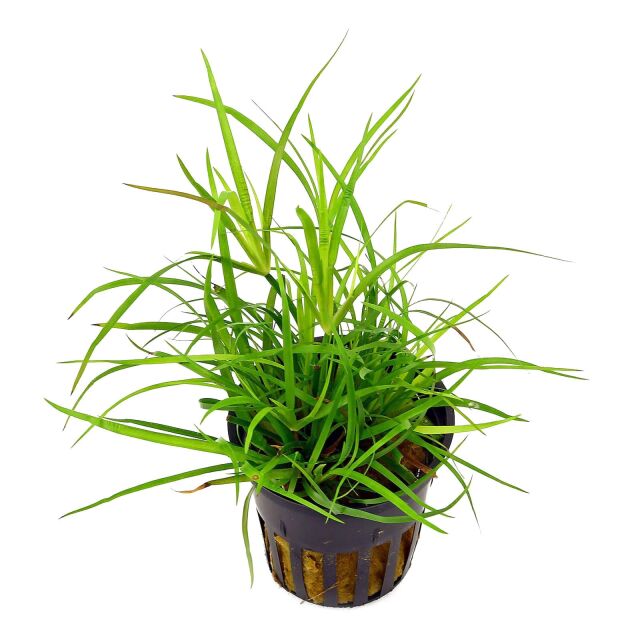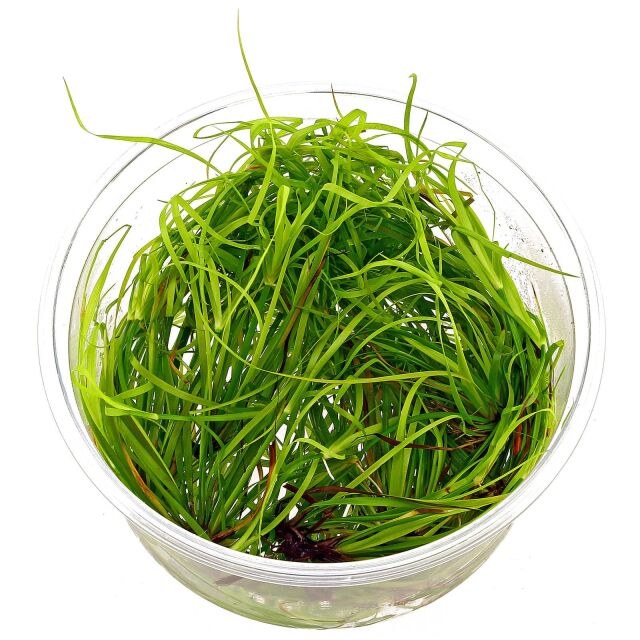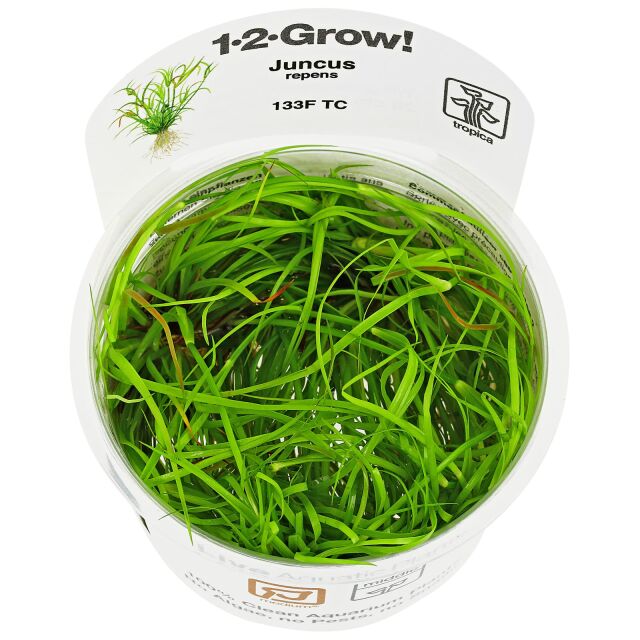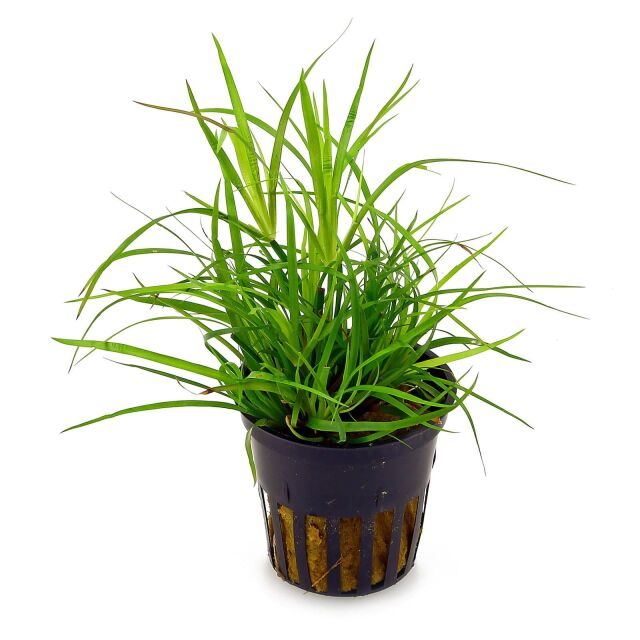Creeping rush





Juncus repens
Creeping rush
- Grasslike stem plant
- Unique growth habit
- Relatively slow grower
Item question
We’re here for you!
Please enter your question and e-mail and we’ll contact you as soon as possible. It usually takes us up to 24 hours during business days to respond.
Thank you for your question!
Thank you, we’ll get in touch!
Close window
You already sent us a question.
Please wait a few minutes
Description
The Creeping rush originates from swampy areas of the southeasern USA, Cuba and eastern Mexico. Its long shoots float in shallow water, and the emersed plant grows creeping on wet bottom, therefore its name. In its submerged form, it is a loosely upright growing stem plant with tufted side shoots and water roots. Its leaves get about 10 cm long and 3 mm wide. Without trimming, Juncus repens grows in the aquarium to the surface where it develops a dense mat, but the lower parts start to look unsightly. Its grass-like bushes look best when they do not exceed a height of about 20 - 30 cm. Under moderate light, it has a pleasant, freshly green colour, but it assumes a brown-red hue under intense lighting and good micronutrient supply.
This grass-like plant is not very demanding but grows best with medium to strong lighting, CO2 addition and complete macro- and micronutrient supply. Its growth is generally moderate, and its long-living leaves are a little susceptible for green spot algae. However its growth may be quite fast with ample light, CO2 and nutrient supply. Regular trimming supports a bushy growth habit. The Creeping rush is propagated by cuttings of the shoot tops and rosette-like side shoots.
Juncus repens is a versatile plant for aquascapes, as accent plant or larger bushy stand in the midground to background. It is even useable in the foreground of not too small aquariums when it is kept trimmed.Even though other members of the rush family (Juncaceae) are popular plants for ponds or their edges, Juncus repens, the lesser creeping rush, is their only representative used in aquaria so far. Its habit is quite unique, as it looks like a mixture of stem and rosulate plant. Its flattish stem is interrupted by tufts of numerous narrow, pointed leaves in regular distances.
This rush species is quite common the southeast of the US, where it is found growing emersed as well as submersed. Even though it is not frequently found in trade in its country of origin, it is readily available for European hobbyists.
The overall requirements of J. repens are easy to meet, and the plant does well in a multitude of different setups, it grows equally well under low light as under strong light. (read more)
| Common names | Creeping rush, Lesser creeping rush |
| Complete botanical name | Júncus répens Michx. |
| Family | Juncaceae |
| Genus | Juncus |
| Difficulty | easy |
| Usage | Background, Midground, Foreground, group |
| Growth | fast |
| pH value | 5 - 7 |
| Temperature tolerance | 4 - 28°C |
| Carbonate hardness | 0 - 14°dKH |
| General hardness | 0 - 30°dGH |
| Propagation | Cuttings, Splitting, cutting off daughter plants |
| Can grow emersed? | yes |
| Source | Flowgrow |
| Common names |
| Creeping rush, Lesser creeping rush |
| Complete botanical name |
| Júncus répens Michx. |
| Family |
| Juncaceae |
| Genus |
| Juncus |
| Difficulty |
| easy |
| Usage |
| Background, Midground, Foreground, group |
| Growth |
| fast |
| pH value |
| 5 - 7 |
| Temperature tolerance |
| 4 - 28°C |
| Carbonate hardness |
| 0 - 14°dKH |
| General hardness |
| 0 - 30°dGH |
| Propagation |
| Cuttings, Splitting, cutting off daughter plants |
| Can grow emersed? |
| yes |
| Source |
| Flowgrow |
How many plants do I need?
General information
| Item no. |
|
| EAN | 8712001021909 |
| Weight | 0,10 kg |
| Shipping weight | 0,10 kg |
Customers ask customers
You have questions about this product? Ask other customer or our support team about this product!
Customer reviews
6 Reviews
| 5 Stars(4) |
|
| 4 Stars(0) |
|
| 3 Stars(0) |
|
| 2 Stars(1) |
|
| 1 Star(1) |
|

Received in Italy in a very short time. Plants look great and healthy!! A special thanks to Aquasabi's staff who suggested me to wait until Monday for shipping in order... (read more)

This one is pale too reaching in Barcelona. After two days arriving in Bangladesh found it almost yellowish and rotten